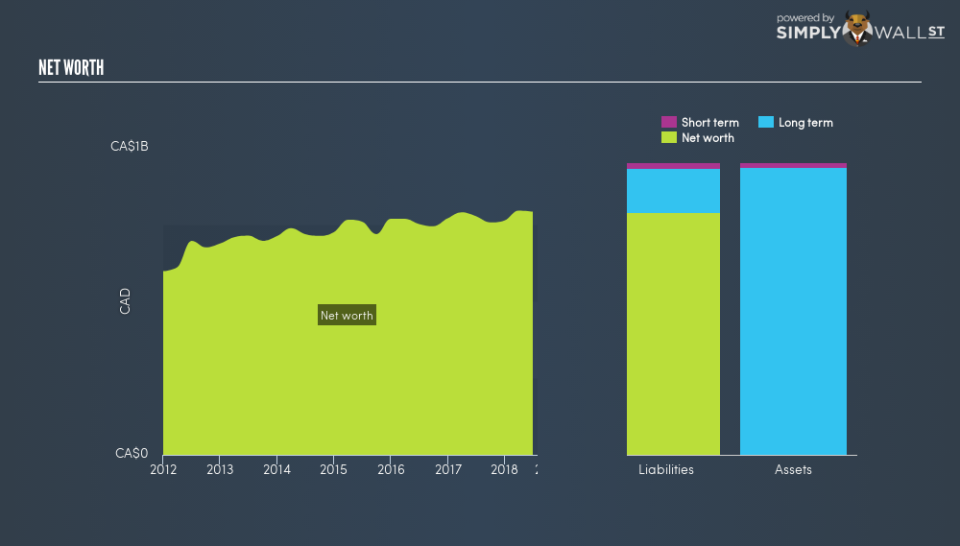Valener Inc (TSE:VNR): How Much Money Comes Back To Investors?

Valener Inc (TSE:VNR) shareholders, and potential investors, need to understand how much cash the business makes from its core operational activities, as well as how much is invested back into the business. After investment, what’s left over is what belongs to you, the investor. This also determines how much the stock is worth. Today we will examine VNR’s ability to generate cash flows, as well as the level of capital expenditure it is expected to incur over the next couple of years, which will result in how much money goes to you.
See our latest analysis for Valener
Is Valener generating enough cash?
Valener generates cash through its day-to-day business, which needs to be reinvested into the company in order for it to continue operating. What remains after this expenditure, is known as its free cash flow, or FCF, for short.
There are two methods I will use to evaluate the quality of Valener’s FCF: firstly, I will measure its FCF yield relative to the market index yield; secondly, I will examine whether its operating cash flow will continue to grow into the future, which will give us a sense of sustainability.
Free Cash Flow = Operating Cash Flows – Net Capital Expenditure
Free Cash Flow Yield = Free Cash Flow / Enterprise Value
where Enterprise Value = Market Capitalisation + Net Debt
Valener’s yield of 4.16% indicates its sub-standard capacity to generate cash, compared to the stock market index as a whole, accounting for the size differential. This means investors are taking on more concentrated risk on Valener but are not being adequately rewarded for doing so.
What’s the cash flow outlook for Valener?
Can VNR improve its operating cash production in the future? Let’s take a quick look at the cash flow trend the company is expected to deliver over time. In the next few years, expected growth for VNR’s operating cash is negative, with operating cash flows expected to decline from its current level of CA$61m. This is unfavourable to its future outlook, especially if capital expenditure heads the opposite direction. However, breaking down growth into a year on year basis, VNR ‘s negative growth rate improves each year, from -8.5% in the upcoming year, to 1.4% by the end of the third year.
Next Steps:
The company’s low yield relative to the market index means you are taking on more risk holding the single-stock Valener as opposed to the diversified market portfolio, and also being compensated for less. Furthermore, its declining operating cash flow doesn’t seem appealing. Now you know to keep cash flows in mind, You should continue to research Valener to get a more holistic view of the company by looking at:
Valuation: What is VNR worth today? Is the stock undervalued, even when its growth outlook is factored into its intrinsic value? The intrinsic value infographic in our free research report helps visualize whether VNR is currently mispriced by the market.
Management Team: An experienced management team on the helm increases our confidence in the business – take a look at who sits on Valener’s board and the CEO’s back ground.
Other High-Performing Stocks: If you believe you should cushion your portfolio with something less risky, scroll through our free list of these great stocks here.
To help readers see past the short term volatility of the financial market, we aim to bring you a long-term focused research analysis purely driven by fundamental data. Note that our analysis does not factor in the latest price-sensitive company announcements.
The author is an independent contributor and at the time of publication had no position in the stocks mentioned. For errors that warrant correction please contact the editor at editorial-team@simplywallst.com.

 Yahoo Finance
Yahoo Finance 
